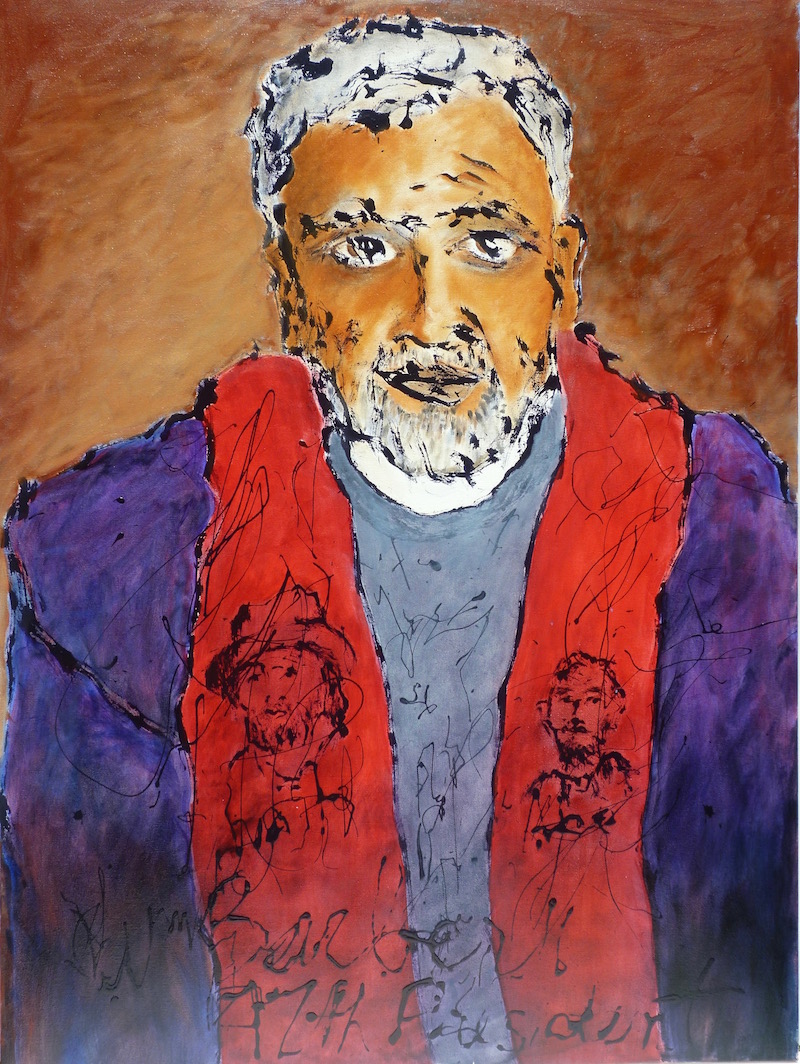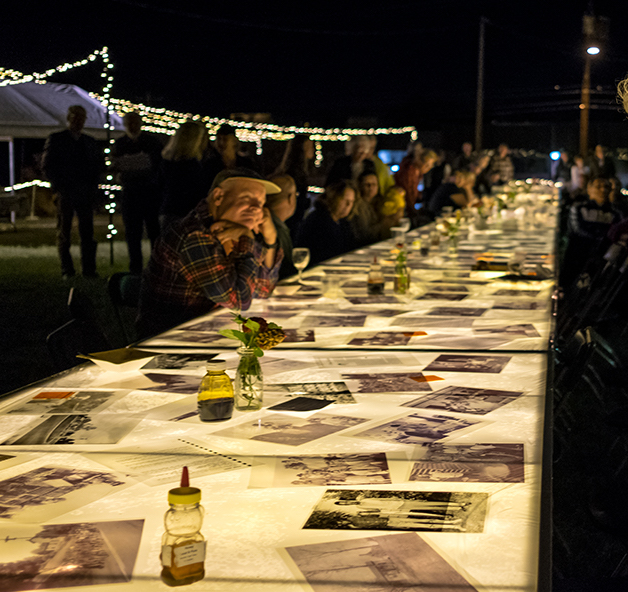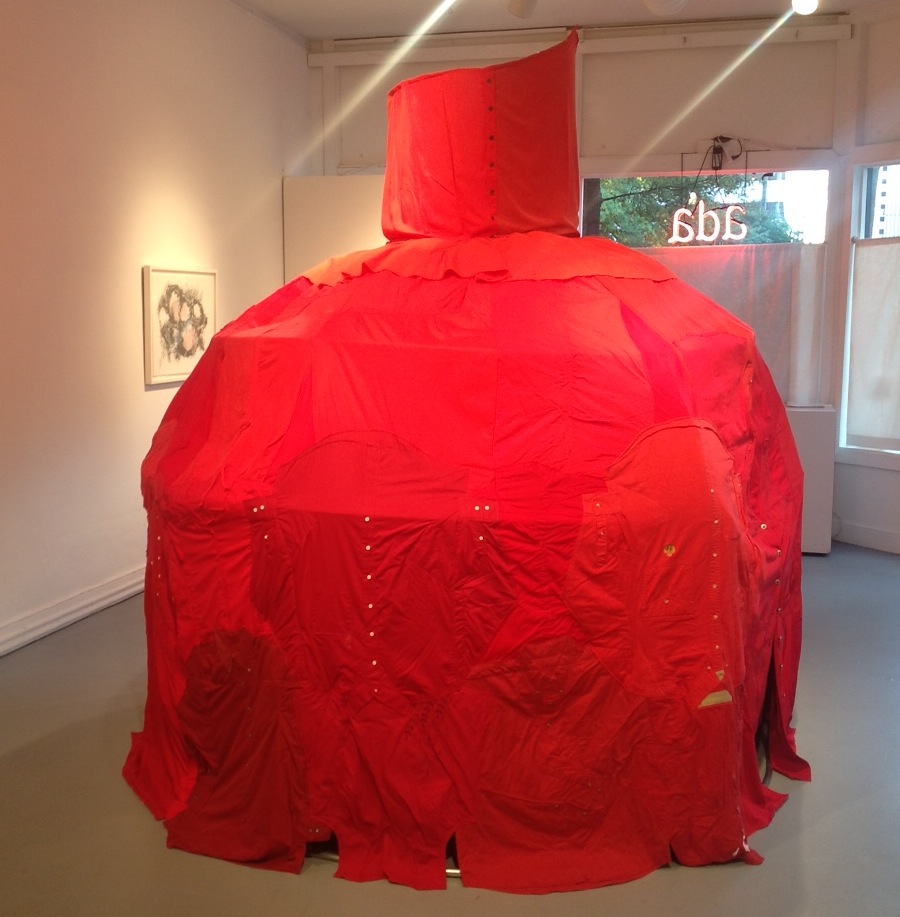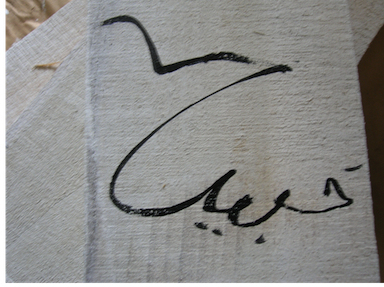William Barber II and The 18th Presidency or “Give us a portrait of a President that you admire.”
Three years ago I asked myself this question: When a sculptor puts down his carpentry tools and picks up a brush, how does he go about it?
I chose to create brush-like objects to draw and paint with, objects resembling brushes but unwieldy enough to undermine any control; made from old drumsticks, plant fibers, dried broomstraw, mop handles. Then I chose to draw and paint something that required perhaps the most control of any other representational endeavor: the human face. Ceding control to these rough brushes, I have been surprised, over and over, at what they deliver; so when I was asked to contribute a portrait of a President for a recent exhibition, it made sense for me to say yes. I used a five-foot pole at the end of which was a sheaf of sisal or jute cut from a roofing brush and dipped into Twilight Purple house paint. The canvas was on the floor.
But who? What U.S. President is worthy of admiration, of celebration? The idea of an exhibition of Presidential portraits might once have been seen as a summer puff-piece, but not today. What U.S. President could be put forward that was not in too many ways deeply flawed or worse, flagrantly corrupt? Who among them forswore his own interests and used the good of the commonwealth as his beacon? Who refused to curry favor of the wealthy class or to personally profit from the office, who was not a bald and blatant striver after political power, who suffered for the struggles the common man, who wept for the misery of the poorest among us, who knew of, let alone acknowledged, the millions of American citizens that go to bed hungry night after night, forty million as we speak, or the hundreds of thousands who, in 2018, have no bed to go to or no home to shelter them? Who used his Presidency in support of those or in empathy with the millions across the face of the earth in far worse circumstances? Which President?
I looked at all of them.
So few to choose from. But look at Rutherford B. Hayes who dedicated himself to fighting corruption. Look At Jimmy Carter. Look at James Garfield who was shot in the back only weeks into his first term. Look at Barack. As I looked at Lincoln I thought of Walt Whitman. I found a wonderful series of early photographs of Whitman sporting a Lincolnesque beard and I considered conflating the two of them into a single portrait, but then I came upon a remarkable piece of Whitman’s writing that may not have ever been published in his lifetime: The Eighteenth Presidency. Written in 1856 during the presidential campaign that pitted Millard Fillmore against James Buchanan, it envisions a future President.
It took me many days to find the entire essay, but I got it.
Whitman opens the essay excoriating the present personnel of government: “limber-tongued lawyers, very fluent but empty, old men, professional politicians, dandies, dispeptics, and so forth, and rarely drawn from the solid body of the people,” and later in the essay he launches into a hair-raising and hilarious litany of epithet and accusation, but before that, two paragraphs after his opening, comes a stunning visionary call: “I would be much pleased to see some heroic, shrewd, fully-informed, healthy-bodied, middle-aged, beard-faced American blacksmith or boatman come down from the West across the Alleghanies, {sic} and walk into the Presidency, dressed in a clean suit of working attire, and with the tan all over his face, breast, and arms…”
Of course, the materialist or physicalist among us will dismiss the fact of Abraham Lincoln fulfilling so much of that vision as chance, coincidence. But what if you begin to think beyond physicalism? What if you allow the possibility, the inkling of inter-dependence or inter-being as our most advanced physicists are now allowing, what if there are more things in heaven and earth than are dreamt of in our philosophy? What if Walt Whitman, the great bard of American democracy, sings Lincoln into being, calls him from Illinois, over the Alleghenies and into the White House? What if the archetypal hero were out there all along simply waiting to be envisioned, waiting to be called into being, what would we wish for, what would our vision be now?
Still in thrall to this question, I came upon the resuscitation of the Poor People’s Campaign being currently directed by the Reverend William Barber. Of course the Poor People’s Campaign lives in our imagination as the lost legacy of the Reverend Martin Luther King, the campaign left undone after King’s assassination, the heroic effort to conjoin black folks and white folks, Hispanic and Native American into a single force whose purpose was to demand that the country embody the teaching of love and compassion. In 1968, the world was evidently not ready for economic justice.
Perhaps because I was born and grew up in North Carolina, I knew about the billionaire-funded takeover of the North Carolina legislature. I knew about the ways in which that newly elected legislature had taken a moderately progressive state and turned it backward, enacting voter suppression laws, creating legislation that discriminated against the LGBTQ community, and more. I cheered my friends and family who began descending in protest upon the state capitol, rallying to the cry of Reverend Barber of Goldsboro and his Moral Monday movement.
So when I saw that Reverend Barber had taken up the mantle of the Poor People’s Campaign, I realized that I had been offered a vision of the future. Here was a man that not only empathized with the poor and downtrodden, but who stood with them, and fought for them, sometimes at great personal cost. This was my man. Our heroic, fully-informed, middle-aged, beard-faced, compassionate, morally upright man. William Barber II, The 47th President.



